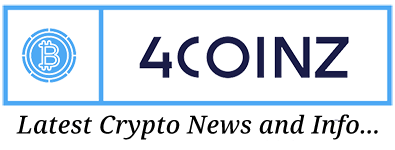-
Back to menu
Prices
-
Back to menu
-
Back to menu
Indices -
Back to menu
Research
-
Back to menu
Events -
Back to menu
Sponsored
-
Back to menu
Videos -
Back to menu
-
Back to menu
-
Back to menu
Webinars
Select Language
By Krisztian Sandor, AI Boost|Edited by Cheyenne Ligon
Aug 27, 2025, 8:26 p.m.

- VersaBank is testing a tokenized deposit called USDVB, which represents one U.S. dollar held on deposit at VersaBank USA.
- The pilot will simulate transactions using the Ethereum, Algorand, and Stellar blockchains, aiming to provide an alternative to stablecoins.
- Unlike stablecoins, the bank said its token is federally insured and can earn interest and aims to seek OCC approval before public rollout.
VersaBank, a Canadian digital bank with a focus on business clients, has started testing a tokenized deposit that the bank says provide a safer and more compliant alternative to stablecoins.
The pilot, run through the bank’s U.S. subsidiary VersaBank USA, will trial a U.S. dollar version of the bank’s blockchain-based Digital Deposit Receipts (DDRs) tech. Each token, branded USDVB, represents one U.S. dollar held on deposit at VersaBank USA.
STORY CONTINUES BELOW
The program will simulate thousands of transactions of small value, first internally and then with select external partners. Tokens will be managed through the bank’s digital vault and e-wallet platforms and issued on the Ethereum ETH$4,588.12, Algorand ALGO$0.2534 and Stellar XLM$0.3838 blockchains.
While stablecoins, crypto tokens with prices tied to fiat currencies like the U.S. dollar, have captured most of the attention, banks are also exploring tokenized deposits to make money transfers more efficient using blockchain rails. A stablecoin, like Circle’s USDC or Tether’s USDT, is typically issued by a private company and backs the tokens’ value with reserves held at a third-party custodian. Meanwhile, a tokenized deposit is a liability of a regulated bank and subject to banking rules.
Earlier this year, Custodia and Vantage Bank tokenized U.S. dollar demand deposits on Ethereum, while JPMorgan tested its deposit token on Coinbase’s layer-2 network Base.
Unlike most stablecoins, VersaBank said its tokens are federally insured and can earn interest, making them functionally similar to traditional deposits but with the added efficiency of blockchain-based settlement.
The bank said it expects to finish the pilot by the end of 2025 and will seek approval from the Office of the Comptroller of the Currency (OCC) before any public launch.
Read more: Stablecoins, Tokenization Put Pressure on Money Market Funds: Bank of America
Disclaimer: Parts of this article were generated with the assistance from AI tools and reviewed by our editorial team to ensure accuracy and adherence to our standards. For more information, see CoinDesk’s full AI Policy.
Krisztian Sandor is a U.S. markets reporter focusing on stablecoins, tokenization, real-world assets. He graduated from New York University’s business and economic reporting program before joining CoinDesk. He holds BTC, SOL and ETH.
“AI Boost” indicates a generative text tool, typically an AI chatbot, contributed to the article. In each and every case, the article was edited, fact-checked and published by a human. Read more about CoinDesk’s AI Policy.
More For You
By Krisztian Sandor|Edited by Cheyenne Ligon
2 hours ago

Integrating USDC into Finastra’s payments hub aims to cut costs and speed up international transfers.
What to know:
- Finastra will integrate Circle’s USDC stablecoin into its payments hub, allowing banks to settle cross-border transfers with the token.
- The integration starts with Finastra’s Global PAYplus, which processes $5 trillion daily flows, aims to reduce reliance on costly correspondent networks by enabling faster and cheaper settlements.
- The move highlights the growing interest in stablecoins among financial institutions as alternatives to traditional settlement methods.















